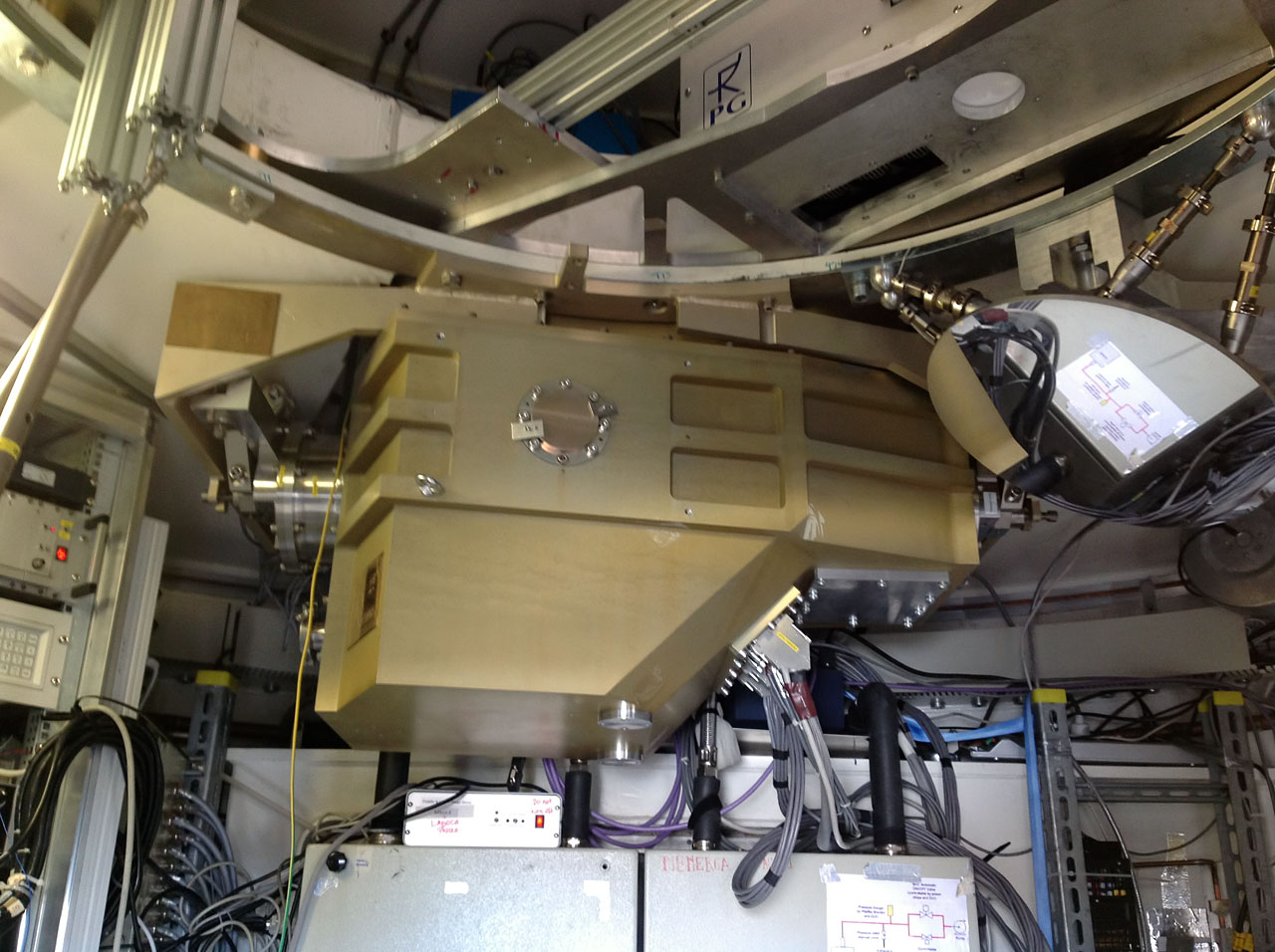ArTéMiS
Architectures de bolomètres pour des Télescopes à grand champ de vue dans le domaine sub-Millimétrique au Sol
Since 2013, ArTéMiS has been part of the suite of instruments of installed at the Atacama Pathfinder Experiment (APEX), a telescope designed to study the “cold Universe”, areas of space where the temperatures are only a few degrees above absolute zero.
These regions emit far-infrared (or submillimetre) light that is detected by ArTéMiS between wavelengths of 350 and 450 microns. “By mapping these regions with ArTéMiS, astronomers study the very early phases of star formation in our own galaxy and try to understand the physical parameters involved in these phases,” says Vincent Reveret, astronomer of the Commissariat à l'énergie atomique (CEA)-Saclay and part of the team behind ArTéMiS.
Technically speaking, ArTéMiS is a large bolometer camera working in the submillimeter range. This camera can be described as a large array of ultra-sensitive thermometers that measure tiny temperature variations caused by the incoming radiation emitted by cold material (gas and dust) in the Universe.
“Light detectors, like optical CCDs, photodiodes or photoconductors do not work in the submillimetre range. In this domain, we use thermal detectors — or bolometers — in which the absorbed submillimetre light heats up a material inside the pixel of the camera,” explains Reveret.
ArTéMiS contains more than 2000 of such bolometers cooled down to just -272.85℃ (0.3 degrees above absolute zero). The great sensitivity of ArTéMiS combined with the large number of pixels makes the mapping speed more than five times better than previous instruments working in the same wavelengths, and provides astronomers with a great tool to understand the Universe.
ArTéMiS uses the same technology that was developed for the Herschel Space Observatory detectors. In 2016, ArTeMiS was upgraded to allow simultaneous observations at two wavelengths (350 and 450 microns). The result of this upgrade according to the team was successful, and now the instrument can acquire data with angular resolution more than three times better than the Herschel Space Observatory at the same wavelengths.
Data collected by ArTéMiS perfectly complements Atacama Large Millimeter/submillimeter Array (ALMA) by taking initial observations of the submillimetre universe. “ALMA sees better details, but is not able to make big maps — or at least it takes long long time! When ArTéMiS makes large maps of big molecular clouds, for example, ALMA can perform follow-up observations of some sources detected by ArTéMiS,” concludes Reveret.
ArTéMiSThe authoritative technical specifications as offered for astronomical observations are available from the Science Operation page.
|
